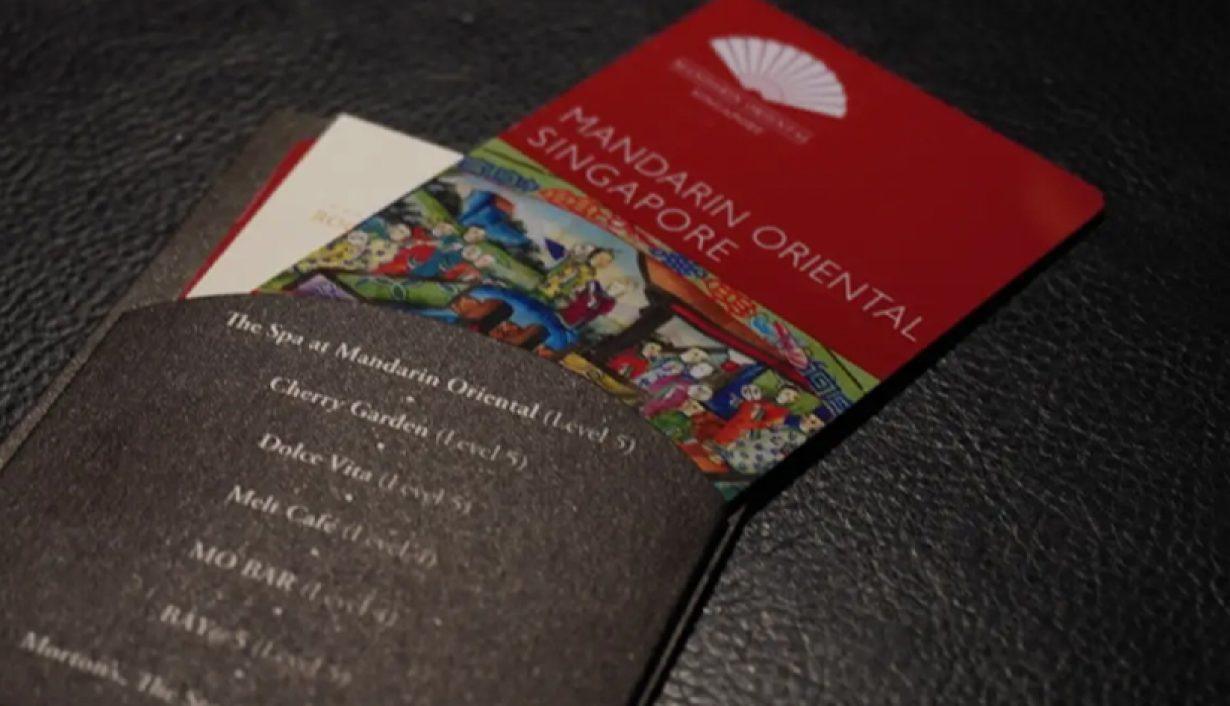
As an important part of the guest check-in experience, the hotel key card not only affects the guest’s first impression, but also directly relates to their overall stay experience. So how should the hotel card be designed to improve customer satisfaction?
The Importance of Hotel Key Card Design
Hotel key card design is not only a tool to enter the guest room, but also a bridge for hotel brands to communicate with guests. A beautifully designed and fully functional key card can make guests feel the hotel’s care, thereby enhancing their satisfaction and loyalty. Especially in today’s digital age, the quality of hotel key card design can even affect guests’ sharing and comments on social media.
Why can thoughtful hotel key card design improve guest satisfaction
Shaping the first impression
When guests check in to a hotel, the first item that directly contacts the hotel brand is usually the key card. Through thoughtful design, hotels can convey brand value and care to guests at this critical moment. For example, when guests receive a beautifully designed and made key card, they will immediately feel good about the hotel’s professionalism and attention to detail, which will form a positive first impression.
Improve the user experience
An easy-to-use key card can greatly reduce the hassle of guests during their stay and improve their overall experience. For example, RFID key cards can avoid guests’ frustration after multiple failed attempts to open the door due to their contactless convenience. This design convenience not only reduces usage barriers, but also allows guests to feel cared for by the hotel every time they enter and exit the room, thereby enhancing satisfaction.
Enhance security
Key card design is directly related to guests’ sense of security. By designing a more secure key card system, hotels can effectively reduce the security risks caused by key card duplication or loss. For example, many hotels now use one-time password technology to ensure that every guest can enjoy a high level of security during their stay. This improvement in security not only makes guests feel more at ease, but also makes them more trusting of the hotel’s management capabilities.
Deliver brand value
Through thoughtful key card design, hotels can also invisibly convey brand value to guests. For example, an environmentally friendly hotel can win the favor of guests who focus on sustainable development by using renewable materials to make key cards and incorporating environmental protection concepts into the design. Such a design not only allows guests to feel the hotel’s philosophy during use, but also increases their sense of identity with the hotel brand.
Increase interactive experience
Some hotels have added interactive elements to the key card design, such as QR codes or NFC technology, so that guests can get additional information or services by scanning or touching the card. This design not only makes the key card an entry point for information and services, but also increases guests’ sense of participation and interactive experience in the hotel, thereby improving satisfaction.
From the above points, it can be seen that thoughtful hotel key card design is not only a visual and functional consideration, but also an important means for hotels to improve guest satisfaction. Good design can start from the details, by shaping a positive first impression, improving the user experience, enhancing the sense of security, conveying brand value, and increasing the interactive experience, comprehensively improving guests’ overall satisfaction with the hotel.
How does hotel key card design improve guest satisfaction
To improve guest satisfaction, hotels need to consider the following points when designing key cards:
Convenience and ease of use
In modern hotel management, convenience is one of the key factors to improve guest satisfaction. The design of hotel key cards should be simple and easy to use. For example, although traditional magnetic stripe cards are widely used, they are easy to demagnetize, which brings inconvenience to guests. In contrast, RFID key cards significantly improve the guest experience due to their contactless and fast identification characteristics.
Take Marriott International Hotel Group as an example. They have more than 7,000 hotels worldwide. In recent years, they decided to fully adopt RFID key cards to improve the guest experience. Previously, many guests of Marriott hotels complained that magnetic stripe cards were prone to failure, especially when carrying mobile phones or other electronic devices. The management of Marriott Hotel Group was aware of this problem and decided to introduce RFID technology.
In the specific implementation, Marriott optimized the key card design of each hotel, and added usage prompt icons to the cards to ensure that the card design is consistent with the hotel’s brand style. The results showed that after adopting RFID key cards, guest satisfaction was improved. Especially in Marriott hotels in the United States, guests bind RFID key cards through the hotel’s mobile application, which further enhances the check-in experience.
Personalization and brand identity
Personalized hotel key card design not only enhances brand identity, but also makes guests feel different. For example, when designing a hotel key card, you can incorporate the hotel’s brand elements, such as iconic colors, patterns, and even the hotel’s historical and cultural background. This design not only enhances guests’ sense of identity, but also allows them to continuously deepen their memory of the hotel brand during use.
Mandarin Oriental, Hong Kong is known for its luxury and elegance. In order to allow guests to better experience the hotel’s unique culture, the hotel specially designed an RFID key card with Mandarin Oriental’s iconic fan pattern. The card is made of high-quality materials, feels comfortable, and is decorated with a gold frame to highlight its noble temperament. In addition, there is a brief history of the hotel and a record of celebrity stays on the back of the card.
This unique design not only allows guests to experience a unique luxury experience, but also deepens their understanding of the Mandarin Oriental brand through the content on the card.
Environmental protection and sustainable development
With the improvement of environmental awareness, more and more guests have begun to pay attention to the hotel’s sustainable development initiatives. By using environmentally friendly materials to design hotel key cards, you can not only convey the hotel’s environmental protection concept, but also win the support of guests. For example, using degradable materials to make key cards or using recycled materials can become a highlight to improve guest satisfaction.
Some hotels that focus on sustainability, such as the Four Seasons Resort Koh Samui, decided to use bamboo and recycled plastic to make hotel key cards in order to implement this concept. This key card is not only environmentally friendly, but also has a high sense of design, which is completely in line with the brand image of Four Seasons Hotels.
In the process of promoting this environmentally friendly key card, the hotel also placed environmental education brochures at the front desk and in the guest rooms, detailing the environmental significance of the key card. Guests have highly praised this move, expressing that the design made them feel the hotel’s commitment to environmental protection, making them more willing to support and recommend the hotel. Since introducing the environmentally friendly key card, the Four Seasons Hotel has earned the title of “most environmentally friendly hotel” on multiple travel websites, significantly enhancing the hotel’s reputation.
Seamless connection between hotel key card design and guest experience
When designing a hotel key card, in addition to beauty and functionality, the actual use scenario of the guest should also be taken into account. For example, the size of the card should be moderate and easy to carry; the information on the card should be concise and clear to avoid confusion when the guest uses it. At the same time, the design should be consistent with the overall style of the hotel to form a seamless visual experience, thereby enhancing the overall stay experience.
Through these thoughtful design considerations, hotel key cards can not only become an indispensable tool for guests on their journey, but also significantly improve guest satisfaction by improving convenience, personalized experience and environmental awareness, thereby winning more repeat customers and a good reputation for the hotel.
FAQs about hotel key card design
- How does hotel key card design affect the brand image?
Hotel key card design directly reflects the brand image of the hotel. By incorporating brand elements and cultural characteristics, key cards are not only a door-opening tool, but also an extension of the brand, which enhances guests’ identification and loyalty to the hotel.
- Why are RFID key cards more popular than magnetic stripe cards?
RFID key cards are contactless, easy to operate, and durable, which greatly reduces the risk of card failure and improves the guest’s experience. In contrast, magnetic stripe cards demagnetize easily and cause inconvenience.
- How to improve guests’ environmental awareness through hotel key card design?
Hotels can choose to use degradable or recycled materials to make key cards, and incorporate environmental protection information into the card design to convey the hotel’s sustainable development concept to guests, thereby enhancing guests’ environmental awareness.
Rec-Products
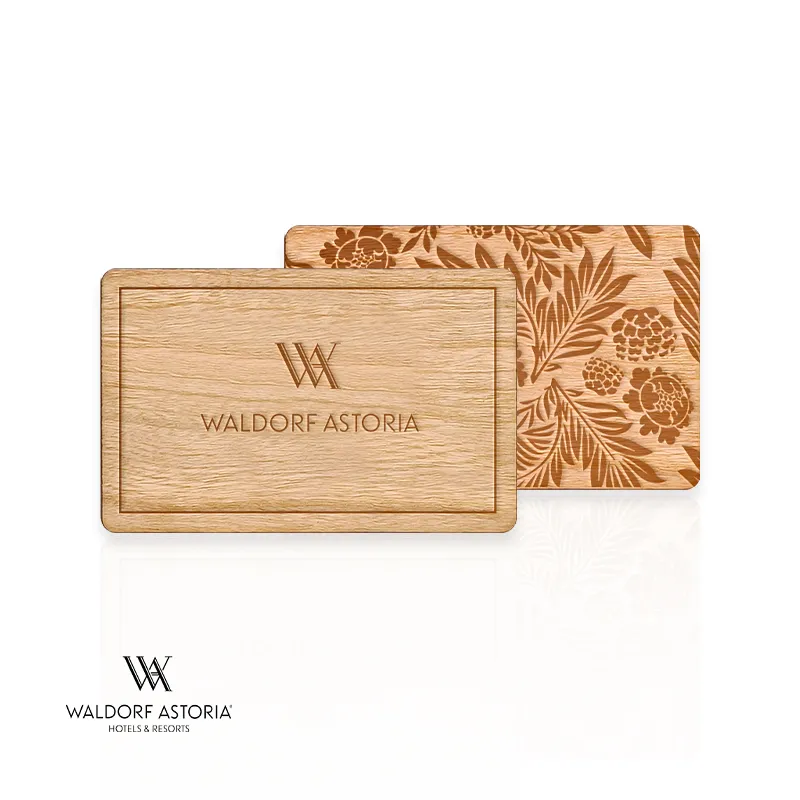
Wooden Waldorf Astoria Key Card
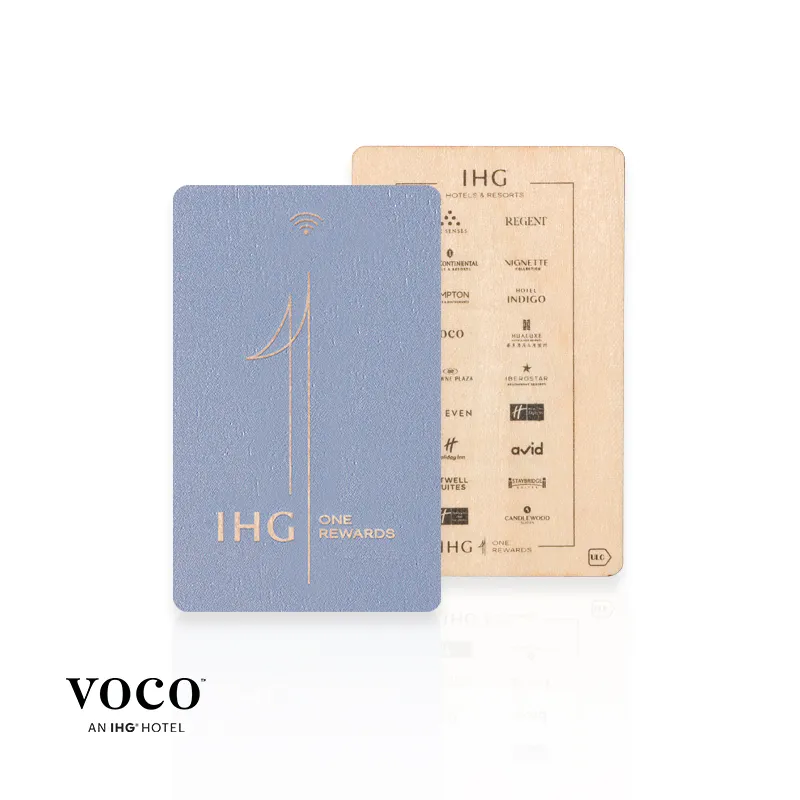
Wooden voco Hotels Key Card
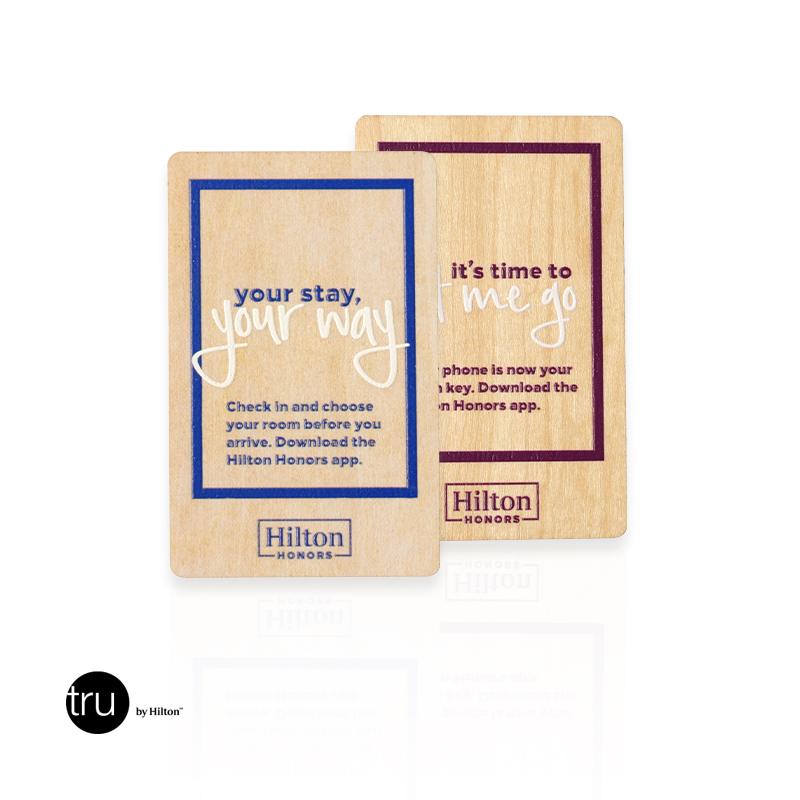
Wooden Tru by Hilton Key Card
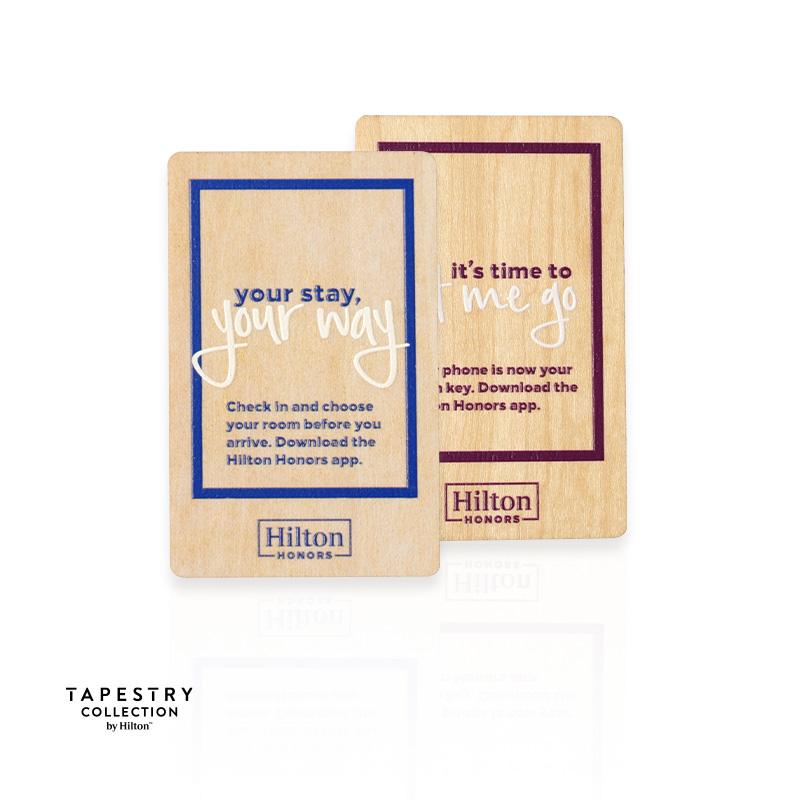

RFID Antenna UHF
15-Meter Cable for UHF RFID Fixed Reader
UHF Tag
4″x2″ 860-960MHz UHF RFID Label RFID M4D
UHF Tag
4″x4″UHF RFID Label Alien H3 | ISO18000-6C
RFID Antenna UHF
5-Meter Cable for UHF RFID Fixed Reader
HF Card
ABS RFID KEY-FOB Tag RFID Classic 1K
HF Card
ABS RFID KEY-FOB Tag RFID Classic 4K
HF Card
ABS RFID KEY-FOB Tag RFID Ultralight C
HF Tag
ABS RFID KEY-FOB Tag RFID Ultralight EV1
LF Card
ABS RFID KEY-FOB Tag ATA5577
LF Card
ABS RFID KEY-FOB Tag EM4200
HF Card
ABS RFID KEY-FOB Tag EM4305
HF Card
ABS RFID KEY-FOB Tag RFID TAG 213